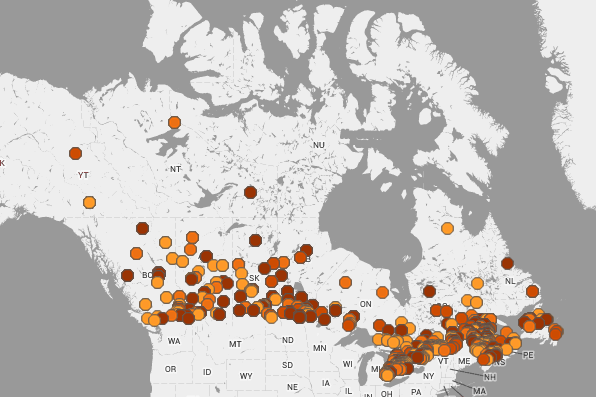Radon gas levels high across Canada

You can’t see it, smell it or taste it. Yet it could be in your home, making you sick.
It’s radon, a radioactive gas created when uranium in the soil breaks down.
Radon can get into any building – homes, offices, community centres and schools – through cracks in windows, foundations, walls and around pipes.
Radon causes lung cancer, killing approximately 3,000 Canadians each year.
A Health Canada survey of radon concentrations in homes across Canada found that 6.9 per cent of Canadians are living in homes with radon levels above the current radon guideline. (To read the survey, click here and in the search box enter: radon survey.)
How to test for radon
Radon testing is easy and inexpensive. Radon test devices are sold in home improvement stores.
Property owners can also hire a certified radon measurement and mitigation professional. For a list of qualified professionals, visit Health Canada.
Tests results in your neighbourhood
CBC News obtained Health Canada data and plotted it to show the results of approximately 14,000 radon tests in homes across Canada. Search the interactive map.
Radon levels typically vary from property to property.
Radon-resistant construction techniques
For information on new construction techniques to inhibit radon, click here and in the search box enter: radon FAQs.
For information, contact Health Canada’s Radiation Protection Bureau at radon@hc-sc.gc.ca or 613.946.6384.